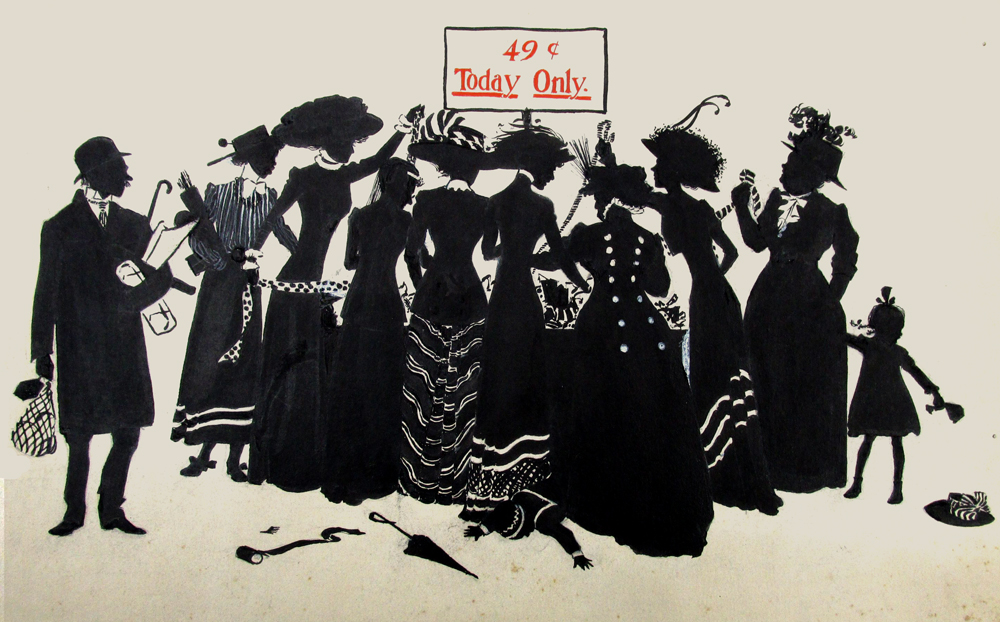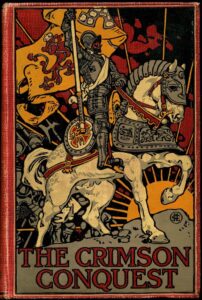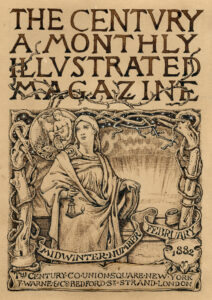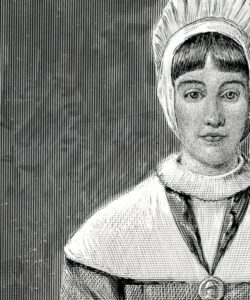
Eight women converge on a sales counter, hunting for bargains. Above them a placard reads, “Today only–49 cents.” Their costumes and silhouetted forms are winsome and elegant — so much so that it takes a moment to notice the trampled boy, in stocking cap and sailor suit, lying face down on the ground. A victim of the rush for savings.
This lively, stylish and darkly droll image was created for Life Magazine circa 1912 by Jessie Gillespie (1888-1926), an illustrator perhaps best remembered for her work with the Girl Scouts.
It’s a rich piece, ripe for critical analysis. It captures an early moment in the story of consumer culture — when clothiers and cosmetics makers began selling women a kind of luxurious intimacy, even as the battle for women’s suffrage began to rage. The image exploits anxieties about self-involved females neglecting their maternal duties. It’s also a distinguished example from a category in illustration reserved for women practitioners.
Illustration House
Historically, magazine illustration has received little scholarly attention.
But in 1974, Walt Reed opened the Illustration House. For decades, the New York gallery was the nation’s premiere advocate for illustration art. In addition to hosting exhibitions, Reed and his son, Roger, staged twice-yearly auctions and helped pioneer what has become a thriving market for original works of illustration.
“No one else was doing this,” says Jeff Pike, an illustrator and professor of communication design in the Sam Fox School of Design & Visual Arts at Washington University in St. Louis.

“Walt knew many of the illustrators he worked with, and brought a level of knowledge and sophistication that were, frankly, unmatched,” Pike says. “His book, ‘The Illustrator in America: 1860-2000’ is among the most important in the field.”
Now, Washington University Special Collections has worked with Reed to acquire the Illustration House archives, along with a substantial number of original artworks.
These materials, which will be housed in the university’s Modern Graphic History Library (MGHL), include approximately:
- 8,000 periodicals.
- 1,200 illustrated books.
- 250,000 magazine tear sheets.
- 140 pieces of original art, ranging from sketches and drawings to production art and finished canvases, by 45 artists.
A cultural strength
“Illustration remains a poorly theorized field,” says D.B. Dowd, professor of art and American culture studies in Arts & Sciences, and creator of the illustrated journal Spartan Holiday. “It has been characterized by enthusiasts and fans more than by serious scholarship. The academy hasn’t paid much attention.”

But things have begun to change. Around the country, a handful of universities — notably Duke, Ohio State and Michigan State — have established strong collections dedicated to advertising, comic books and other forms of graphic culture.
“Our particular strength is periodical illustration,” says Dowd, who also serves as faculty director of the MGHL and leads the Sam Fox School’s newly formed Visual Culture Initiative. He explains that the catalyst for establishing the MGHL, in 2007, was a series of major gifts from the estates of Al Parker (a WashU alumnus), Robert Weaver and other leading practitioners.
“The profession of illustrator was created at the birth of the modern publishing industry, which was driven by periodicals,” Dowd says. “Yet the study of illustration has been weak, analytically speaking, in part because illustrations are always contingent on something else.
“But from a culture studies perspective, that contingency is actually a strength,” Dowd says. “If you open just about any mid-century magazine, you’ll find illustrations, photographs, cartoons, short stories, nonfiction features, columns and advertisements. They’re all evidence of editorial negotiation. The question is, how do these various items collide to capture a cultural moment?
“We intend to build programming and curricula around these resources, for humanists as well as practitioners,” Dowd adds. “They capture then-contemporary social relations, gender roles, racial tropes and the emergence of consumer culture.
“It’s a tremendous academic opportunity.”
The Walt Reed Illustration Archive
Skye Lacerte, curator of the MGHL, notes that the new acquisitions include important examples by dozens of major illustrators, with a particular emphasis on the late 19thand early 20thcenturies.

Highlights include a half-dozen works by Gillespie, as well as a drawing, circa 1860, by Benjamin Day (1810-1889), inventor of the ubiquitous “Ben Day” printing dot, and an 1882 cover illustration for The Century magazine by symbolist painter Elihu Vedder (1836-1923). Other highlights include a 1912 piece for Life Magazine by Orson Lowell (1871-1956) and a 1907 Cream of Wheat illustration by Harry Stacy Benton (1877-1947).
Later examples include a razor-sharp 1965 painting, for Look Magazine, by Austin Briggs (1908-1973). Executed amidst the turmoil of the Civil Rights Movement, it contrasts the brightly colored billboards of the “fast-changing south” with the hunched bodies of cotton workers still in the fields.
In addition, the collection — which will be named the Walt Reed Illustration House Archive — will include materials relating to Reeds’ own scholarship, as well as business records, correspondence and other documents.
“Academic access to this vast and comprehensive collection will greatly impact the growing field of visual culture research,” Lacerte says. “It also documents and preserves the contributions of Walt Reed and Illustration House, the leading establishment in the advancement of illustration study and awareness.
“We are proud to uphold Walt’s legacy, which has influenced and inspired the present-day scholarship of illustration.”
Long Live Illustration!

To celebrate the acquisition, Roger Reed, president of the Illustration House, will present the lecture “Illustration is Dead–Long Live Illustration!” at 6:30 p.m. Wednesday, Nov. 20. The talk is free and open to the public and takes place in the Sam Fox School’s Steinberg Auditorium.
Preceding the talk, at 5:30 p.m., will be the opening of a small exhibition, in the university’s Kranzberg Art & Architecture Library, of highlights from the Walt Reed Illustration Archive.
Steinberg Hall is located near the intersection of Skinker and Forsyth boulevards. The Kranzberg Library is located in the Mildred Lane Kemper Art Museum, immediately adjacent to Steinberg.
For more information, call (314) 935-7741 or visit here.
Comments and respectful dialogue are encouraged, but content will be moderated. Please, no personal attacks, obscenity or profanity, selling of commercial products, or endorsements of political candidates or positions. We reserve the right to remove any inappropriate comments. We also cannot address individual medical concerns or provide medical advice in this forum.